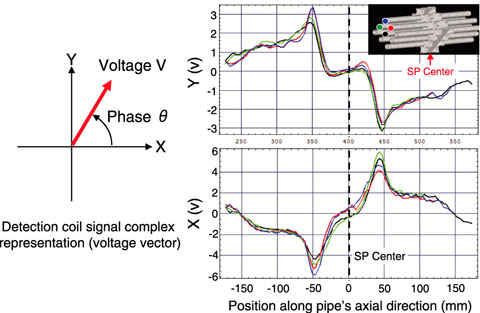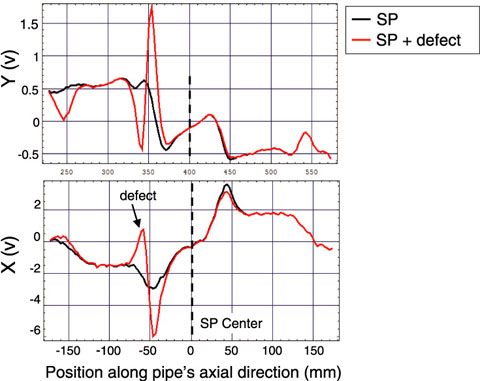
Fig.1-8 Variation in the distribution of the magnetic vector potential in the small (left) and large (right) SP models

Fig.1-9 Variation in the SP signal according to various tube positions

Fig.1-10 ECT signal from a SP when there is or not a defect in the SG tube area under SP
One of the methods used in the In-Service Inspection (ISI) of steam generator (SG) tubes of fast breeder reactors (FBRs) is the eddy current technique (ECT). By monitoring changes in the impedance of ECT coils that are inserted in and moved through and along SG tubes, the soundness of the SG tubes can be evaluated. Defects (such as, for example, lack of thickness, cracks, thermal fatigue) in a SG tube are characterized by variations in the electrical conductivity and the magnetic permeability of the monitored region in the SG tube, which leads to interference and disruption in the primary electromagnetic field created by the ECT system.
While simple axisymmetrical models of SG tubes can be modeled in a short time theoretically or in a two-dimensional axisymmetrical approximation, an accurate description of ISI of FBR SG tubes requires a complete three-dimensional (3D) analysis. The interaction of the electromagnetic field and the complex structure of the support plate (SP) of the SG tubes in FBRs is analyzed using a parallel 3D electromagnetic code that has been developed, based on the finite element method, by means of JAEA supercomputers. Numerical 3D simulations are conducted to simulate and to optimize ISI using ECT for a small SP model (as in a mockup), and a large SP model (as in a real reactor) with multiple SG tubes penetrating a large SP (Fig.1-8).
The detectability of smaller defects, resulting from friction between SP and SG tube, originating in areas of SG tubes located under SPs, is analyzed using simulations, and ECT sensor technology is therefore optimized to increase the signal to noise ratio, regardless of the defect location. Variations in the SP signal, interpreted as noise, result either from the position of various SG tubes relative to the SP or from the electromagnetic shielding effect of the surrounding SG tubes (Fig.1-9, Fig.1-10).
Accurate 3D numerical simulations of ISI of FBR SG tubes are used as an effective tool to optimize and enhance the sensitivity of smaller defect detection using ECT, leading to an upgrade in SG tube safety.